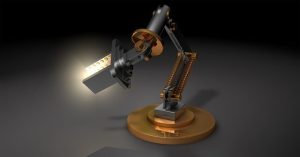Thigh and arm fat freezing, using cryolipolysis technology, is a non-invasive procedure that safely targets and eliminates fat cells in the arms and thighs. This method, popular for its minimal downtime and lack of surgery, leads to gradual reduction over weeks. Results vary based on skin thickness and initial fat levels, but it's suitable for many individuals as an alternative to traditional dieting or exercise for localized fat reduction. Always consult a medical professional before undergoing the procedure.
Tired of feeling self-conscious about arm fat? You’re not alone. Understanding how it develops, along with exploring effective non-surgical options, can empower you towards achieving smoother, tonier arms. In this comprehensive guide, we delve into the root causes of arm fat and its impact on your confidence. We explore promising non-invasive techniques, but specifically focus on thigh and arm fat freezing: what it is, how it works, and why it’s gaining popularity as a safe, non-surgical alternative for body contouring.
Understanding Arm Fat and Its Causes

Arm fat, or subcutaneous fat in the upper limbs, is a common concern for many individuals seeking to improve their physique. Understanding its causes is essential when considering non-surgical options for reduction. Unlike some areas of the body, the arms are more challenging to tone due to the presence of a higher concentration of fat cells and thinner skin. Several factors contribute to excess arm fat, including genetics, age, hormonal changes, weight gain, and reduced physical activity.
One popular non-invasive method gaining traction is Thigh and Arm Fat Freezing, which uses cryolipolysis technology to target and eliminate fat cells. This procedure involves cooling the targeted fat areas to induce lipid breakdown, leading to gradual fat reduction over several weeks. It’s a safe and effective alternative for those seeking to get rid of stubborn arm fat without surgery, offering minimal downtime and no recovery period.
Non-Invasive Approaches to Arm Fat Reduction

Non-invasive approaches to thigh and arm fat reduction have gained significant popularity in recent years, offering effective alternatives to surgical procedures. One prominent method is fat freezing, a non-surgical treatment that targets unwanted fat cells. This procedure uses cold temperatures to freeze and destroy fat cells, leading to their elimination from the body. It’s important to note that while fat freezing is generally safe, it may not be suitable for everyone, and results can vary based on factors like skin thickness and the amount of fat present.
Another non-invasive option is high-intensity focused ultrasound (HIFU) therapy. HIFU uses concentrated sound waves to break down fat cells without damaging surrounding tissue. This method is often considered a game-changer for targeted fat reduction, as it can precisely target problem areas like the thighs and arms. Both thigh and arm fat freezing, along with HIFU, are non-disruptive treatments that allow patients to return to their regular routines promptly after the session.
Thigh and Arm Fat Freezing: A Detailed Look

Thigh and arm fat freezing, also known as cryolipolysis, is a non-invasive treatment that has gained popularity for its ability to reduce stubborn fat in these areas without surgery. During the procedure, a special cooling technology is used to freeze and destroy fat cells in targeted areas. This process prompts the body’s natural response to remove the damaged fat cells, leading to inch loss and improved contouring.
Unlike traditional dieting or exercise, which may not target specific problem areas as effectively, fat freezing offers a more localized approach. It is particularly effective for individuals with small pockets of fat that resist diet and exercise efforts. The procedure is usually non-painful, quick, and can be performed during regular breaks, making it an attractive option for those seeking body contouring without the downtime or risks associated with surgery.
How Does Fat Freezing Work?

Fat freezing, or cryolipolysis, is a non-invasive procedure that targets and destroys fat cells in specific areas like thighs and arms. It works by cooling the fat to temperatures below -13°F (-25°C), which causes them to crystallize and break down. The body then naturally processes and eliminates these damaged fat cells, resulting in reduced fat accumulation. This process is effective for both localizing fat loss and improving overall body contour.
During a typical session, a specialized device applies controlled cold to the targeted area, usually over several zones like outer thighs, inner thighs, arms, and love handles. The procedure is generally comfortable, with some patients reporting mild discomfort. Multiple sessions are often required for optimal results, as fat freezing works by suppressing the body’s ability to store fat in those areas over time. It’s a popular choice due to its non-surgical nature, minimal downtime, and effective reduction of thigh and arm fat without any permanent changes to the body.
Benefits of Choosing Non-Surgical Methods

Choosing non-surgical methods for arm fat reduction offers a range of benefits, appealing to those seeking alternative solutions. One popular option is thigh and arm fat freezing, which has gained significant traction in recent years. This procedure uses targeted cooling technology to break down fat cells, leading to visible reductions in stubborn fat deposits. Unlike surgical procedures, it’s non-invasive, meaning there’s no recovery time or scarring.
The advantage of non-surgical techniques lies in their ability to provide results without the risks and downtime associated with surgery. Thigh and arm fat freezing sessions are typically quick, comfortable, and can be incorporated into daily routines. This accessibility makes it an attractive option for individuals who want to achieve a slimmer, more toned appearance without drastic measures.
Safety and Potential Side Effects of Fat Freezing

Fat freezing, also known as cryolipolysis, is a non-invasive procedure that has gained popularity for reducing fat in specific areas like thighs and arms. While it’s generally considered safe, like any treatment, it’s not without potential side effects. One of the most common temporary side effects is numbness or tingling in the treated area, which usually subsides within a few days to weeks. Another possible effect is bruising, though this is less common. In rare cases, individuals might experience swelling, pain, or discomfort in the targeted fat cells after treatment, but these symptoms are typically mild and manageable.
Long-term safety data for fat freezing is still evolving, with ongoing research helping to establish its efficacy and potential risks. However, it’s essential to remember that results vary from person to person, and multiple treatments may be required to achieve the desired outcome. As always, consulting a qualified medical professional before undergoing any cosmetic procedure, including thigh and arm fat freezing, is crucial for understanding the benefits and risks specific to your body and health history.
Combining Treatments for Optimal Results

Combining different treatments can be a highly effective strategy for achieving optimal results in thigh and arm fat reduction without surgery. For instance, pairing non-invasive procedures like CoolSculpting (fat freezing) with targeted exercises can yield significant benefits. CoolSculpting uses cryolipolysis to break down fat cells, making it an excellent choice for localized fat reduction. However, integrating this treatment with regular strength training and cardio exercises ensures that the treated areas are not only slimmed down but also strengthened and toned.
This multifaceted approach leverages the strengths of each technique. While CoolSculpting provides a powerful non-surgical solution for reducing stubborn fat deposits, exercise plays a crucial role in improving overall fitness, muscle definition, and long-term maintenance of results. Together, they offer a comprehensive strategy to achieve the desired shape and silhouette without the need for invasive surgical procedures.
